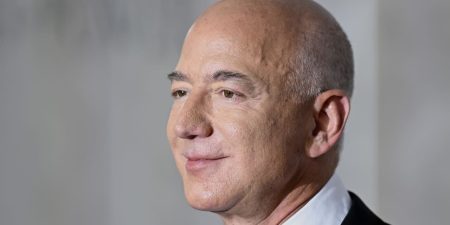Speculation that a Bitcoin exchange-traded fund based on spot prices could be approved is reaching a fever pitch, with crypto trading firm NYDIG estimating it could unleash $30 billion in new demand for the token.
The hype comes as
BlackRock
(ticker: BLK), the world’s largest asset manager, filed an application last month to launch an ETF that would own Bitcoin directly. It was shortly joined by firms including Fidelity,
WisdomTree
(WT), and
Invesco
(IVZ).
The Securities and Exchange Commission has rejected similar applications in the past, but BlackRock and the others may have figured out a way to allay the agency’s concerns by including new agreements for fraud surveillance.
Judges are also expected to soon issue a ruling in a closely watched lawsuit between the SEC and Grayscale Investments, which had sued the agency over its dismissal of efforts to convert the
Grayscale Bitcoin Trust
(GBTC) into an ETF. A favorable ruling for Grayscale could make it more difficult for the agency to keep the ETF applications at bay.
But even if a spot Bitcoin ETF is approved, there is reason to doubt it will be the game changer token promoters say it will to be.
The bull case, as outlined by NYDIG, compares the potential demand for a Bitcoin ETF to funds holding gold. Crypto investors for years have argued that Bitcoin is a replacement for the precious metal. While it doesn’t have any industrial use such as gold, it does have a finite supply and is seen as a disaster insurance if the dollar-based monetary system were to implode.
With that in mind, NYDIG in a report last week noted gold ETFs have around $210.8 billion in assets under management, while Bitcoin funds have about $28.8 billion invested. Bitcoin is more volatile than gold, and after accounting for investors requiring less of the token to gain an equivalent risk exposure, NYDIG said there would be nearly $30 billion in incremental demand for a spot Bitcoin ETF.
That extra $30 billion would no doubt be a boon to token prices, but there are plenty of reasons to doubt the approval of a spot Bitcoin ETF would bring such a bonanza.
One reason is that most investors who believe Bitcoin prices will go up already have plenty of ways to get exposure to the token. Retail investors and financial advisors for years have bought Bitcoin through crypto trading platforms such as
Coinbase
(COIN), and traditional firms including Fidelity and
WisdomTree
have lately integrated crypto trading into their own offerings.
While the SEC hasn’t approved a Bitcoin ETF based on spot prices, it has approved Bitcoin futures-based funds, such as
ProShares Bitcoin Strategy ETF
(BITO), which has about $1 billion in assets. Another several billion dollars sits in spot Bitcoin ETFs regulated in other countries. In the U.S., the
Grayscale Bitcoin Trust,
which trades like a closed-end fund, has nearly $19 billion under management.
All that is to say that a spot Bitcoin ETF could be cheaper and more efficient than existing options, but might end up luring investors from other products rather than increase overall demand.
“There’s this belief that a spot Bitcoin ETF will push the price of Bitcoin up, and I wonder if that will really be the case,” said Stuart Barton, chief investment officer of Volatility Shares.
Volatility Shares late last month shocked some executives in the crypto and ETF industries when it was able to launch the
2x Bitcoin Strategy ETF
(BITX), which uses futures to try to give investors exposure to twice the daily movement in the token’s price. Such leveraged funds are considered risky, especially when tied to volatile assets such as Bitcoin, and executives have argued the SEC was reckless in approving the fund while blocking spot Bitcoin ETFs.
Barton said getting the ETF to market wasn’t as much work as people think, noting Bitcoin futures have been around for years.
As to getting unleveraged Bitcoin exposure, Barton says, “the real question is why do so many people think that a spot Bitcoin ETF will be so much better than a futures based ETF?”
Write to Joe Light at [email protected]
Read the full article here















